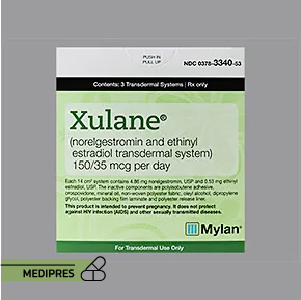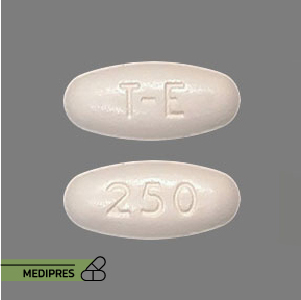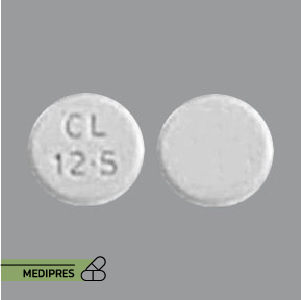
Xofluza
23 June, 2023
Yasmin
23 June, 2023Xulane
Generic name: Ethinyl estradiol and norelgestromin
Drug class: Contraceptives
Dosage forms: Transdermal patch
Root of administration: Transdermal
Dose: 150mcg / 35day
Mechanism of action: It works primarily by the suppression of ovulation, the release of an egg from the ovary.
Drug usage cases: Xulane is a birth control patch you wear on your skin to stop you getting pregnant. Xulane contains two hormones – an estrogen and progestin – which are absorbed through the skin. It prevents pregnancy by stopping your ovaries from ovulating and releasing eggs. Xulane is a generic version of a patch called Ortho Evra, which has been discontinued.
Drug contra indications: History of blood clots: Xulane is contraindicated in individuals with a history of blood clots in the legs (deep vein thrombosis), lungs (pulmonary embolism), or other parts of the body, as well as those with a known clotting disorder. High risk of blood clots: Xulane is contraindicated in individuals with certain risk factors for blood clots, such as smokers over the age of 35, individuals with a BMI of 30 or higher, and those with a family history of blood clots. History of certain cardiovascular conditions: Xulane is contraindicated in individuals with a history of heart attack, stroke, or angina (chest pain due to reduced blood flow to the heart). History of certain liver conditions: Xulane is contraindicated in individuals with liver disease, liver tumors, or a history of jaundice (yellowing of the skin or eyes) during pregnancy or previous use of hormonal contraceptives. Known or suspected breast cancer or other hormone-sensitive cancers: Xulane is contraindicated in individuals with current or past breast cancer or other hormonally-driven cancers. Undiagnosed abnormal vaginal bleeding: Xulane should not be used in individuals with unexplained vaginal bleeding until the cause is determined. Hypersensitivity to Xulane or its components: Xulane should not be used in individuals who have had an allergic reaction to ethinyl estradiol, norelgestromin, or any other ingredients in the patch.
Side effects: Hormones from Xulane get into the blood stream and are processed by the body differently than hormones from birth control pills. You will be exposed to about 60% more estrogen if you use Xulane than if you use a typical birth control pill containing 35 micrograms of estrogen. In general, increased estrogen may increase the risk of side effects. Xulane may cause serious side effects, including:
blood clots. Like pregnancy, hormonal birth control methods increase the risk of serious blood clots (see following graph), especially in women who have other risk factors such as smoking, high blood pressure, high levels of fat in the blood, diabetes, obesity, a family history of blood clots, or age greater than 35. This increased risk is highest when you first start using hormonal birth control and when you restart the same or different hormonal birth control after not using it for a month or more. Some studies have reported that women who use norelgestromin and ethinyl estradiol transdermal system have a higher risk of getting a blood clot. Talk with your healthcare provider about your risk of getting a blood clot before using Xulane or deciding which type of birth control is right for you. It is possible to die or be permanently disabled from a problem caused by a blood clot, such as a heart attack or a stroke. Some examples of serious blood clots are blood clots in the:
legs (deep vein thrombosis), lungs (pulmonary embolus), eyes (loss of eyesight), heart (heart attack), brain (stroke), To put the risk of developing a blood clot into perspective: If 10,000 women who are not pregnant and do not use hormonal birth control are followed for one year, between 1 and 5 of these women will develop a blood clot. The likelihood of developing a serious blood clot for women who use hormonal birth control is between 3 and 12, for pregnant women is between 5 and 20, and for women in the first 12 weeks after delivering a baby (postpartum) is between 40 and 65. Call your healthcare provider right away if you have:
leg pain that will not go away, sudden shortness of breath, sudden blindness, partial or complete, severe pain or pressure in your chest, sudden, severe headache unlike your usual headaches, weakness or numbness in an arm or leg, or trouble speaking, yellowing of the skin or eyeballs, Other serious risks include, liver problems including liver tumors, gallbladder disease, high blood pressure.
Warnings: Increased risk of blood clots: Like other hormonal contraceptives, Xulane increases the risk of blood clots. This risk may be higher for individuals who smoke, are over the age of 35, have a history of blood clots, or have certain medical conditions that increase clotting risks. It is important to discuss your medical history and any potential risks with your healthcare provider. Increased risk of cardiovascular events: Hormonal contraceptives, including Xulane, may increase the risk of certain cardiovascular events such as heart attack, stroke, and high blood pressure. This risk may be higher for individuals with existing cardiovascular conditions or risk factors. Increased risk of liver problems: Hormonal contraceptives can rarely cause liver problems, including liver tumors. It is important to inform your healthcare provider if you have a history of liver disease or other liver conditions. Increased risk of breast and cervical cancer: The use of hormonal contraceptives like Xulane has been associated with a slightly increased risk of breast and cervical cancer. However, the overall risk is still considered low. Interactions with other medications: Xulane may interact with certain medications, including some antibiotics, anticonvulsants, antivirals, herbal products, and medications that affect liver enzymes. It is important to inform your healthcare provider about all the medications you are taking to avoid potential interactions.
Use during pregnancy or breastfeeding: Xulane is not known to cause birth defects when used by accident during pregnancy. Tell your doctor if you are breastfeeding or plan to breastfeed. Hormonal birth control methods that contain estrogen, like Xulane, may decrease the amount of milk you make. A small amount of hormones from the Xulane patch may pass into your breast milk. Consider another method of birth control until you are ready to stop breastfeeding.



